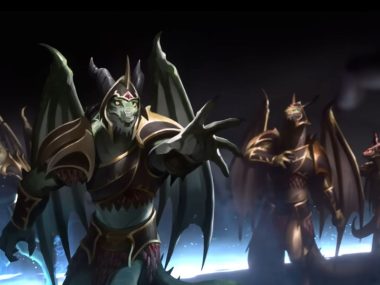What do you get when you mix a wildly beloved indie title, a studio of just three people, and years of near-radio silence? You get Hollow Knight: Silksong, a game that devolved into a meme about waiting. Fans have donned digital clown makeup every time it failed to appear at another showcase. Beneath the jokes lies a bigger issue on how developers, whether indie or AAA, continue to underestimate how long it takes to make a game.
The Neverending Wait for Silksong
Originally planned as a simple DLC following Hornet, a fan-favorite from the original Hollow Knight, the project ballooned into a full-blown sequel. That alone added years to the timeline. Creating a new map, enemies, abilities, mechanics, and lore structure is time-consuming and taxing, especially when you’re a team of three.
By the time Team Cherry showed off a highly polished Silksong demo at E3 2019, it looked nearly ready. That’s what made the silence that followed so deafening.
After a brief wave of media buzz in 2019 and early 2020, Team Cherry largely went quiet with no major updates. Yet, the game kept popping up via placeholder dates, wishful trailers, and vague sizzle reels. Fans got hopeful again and again, only to be met with nothing.
Eventually, the disappointment turned communal. Images of Hornet in clown makeup flooded social media after every missed opportunity. Silksong became less of a game and more of a symbol of every long-delayed promise in modern gaming.
Why Developers Keep Underestimating Time
The Silksong saga isn’t just a Team Cherry problem. It’s a game industry problem. Developers, especially those working on ambitious projects, underestimate how long it’ll take to bring their ideas to life. Why? Because:
- Game development is complex and unpredictable. Timelines that look solid on paper fall apart in practice.
- Scope almost always expands. You start with a small idea and end up building a whole world.
- Delays often improve quality. Rushed releases destroy reputations. A polished game earns forgiveness.
- Silence is strategic. Talking too early locks studios into promises they can’t keep.
Ironically, fans might prefer no timeline at all to one that gets pushed back year after year…but marketing pressure makes that difficult to pull off.
What Indie Devs Should Learn from All This
Indie developers should take notes. Silksong is both a cautionary tale and a validation of ambition. Here are the key lessons:
- Lock the scope early: Expanding from DLC to full game is fine, if you have the team and time to support it.
- Be realistic about timelines: Overpromising and constant delays erodes trust.
- Talk to your community: Remember that transparency builds patience while silence breeds memes.
- Use modern tools: AI-powered asset creation, prototyping, and marketing can cut down workloads.
- Release in phases if needed: Early access is a valid option if you’re overwhelmed.
Will We Actually See Silksong This Year?
Maybe. If it’s playable at Gamescom, that’s a good sign but fans have been burned before. Until Team Cherry announces a release date and actually sticks to it, the clown jokes won’t stop.
The saga of Hollow Knight: Silksong is one on how the industry handles ambition, scope, and silence. If there’s one thing to learn from Silksong, it’s that even the most well-intentioned devs can get lost in their own vision.
Indie or AAA, passion projects need planning and transparency. Otherwise, all you’re left with is an unfinished game and a community of very disappointed clowns.






